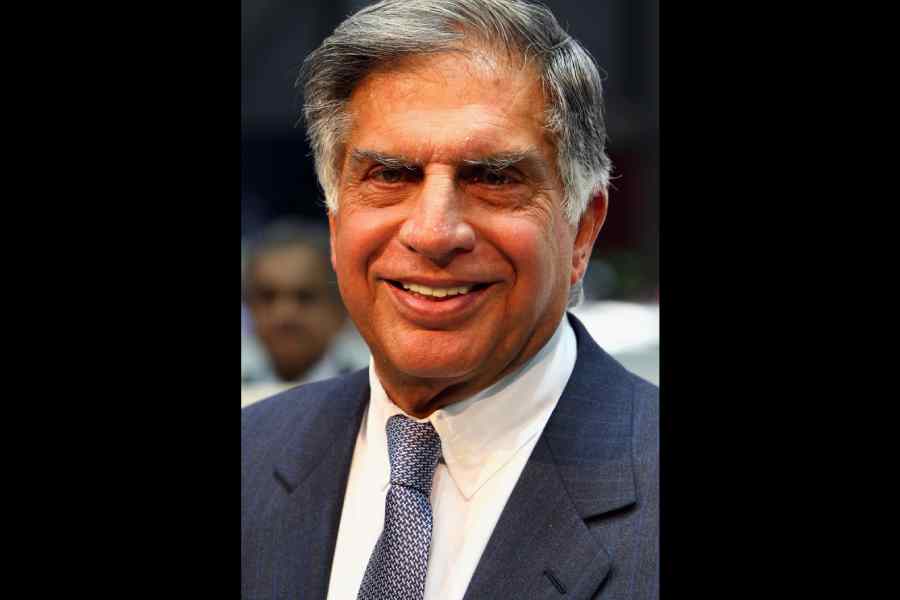True gentleman
It took seven requests before I finally got my first interview with Ratan Tata in November 2006, thanks to Kamal Nath, then the minister for commerce and industry. The relaxed interview took place in the company headquarters in Bombay House. Dressed in an immaculately tailored grey suit with a dark blue tie, Tata resembled an old-school English gent, unflashy and understated. He explained why he wanted to build a small car in West Bengal and trusted its chief minister, Buddhadeb Bhattacharya. He wanted to design a people’s car because he had seen a family perched precariously on a scooter on “a dark, rainy, slippery night”.
Tata came across as a man determined to live below his means. “I couldn’t say I’m wealthy but I am certainly well off enough and I have no desire to show off. I’ve always had a view that 90% of the people really respect the position you hold, and that can be intoxicating. The best way is to continue to be as ordinary a person as you can, wait in lines, drive your own car. I enjoy anonymity. When you’re in London, no one bothers you.” His one luxury weakness, Tata confided, was his Falcon jet: “My greatest indulgence outside work is flying. I love flying and I continue to be a certified pilot. I fly every chance I get.” Tata revealed that he loved one corner of England which was forever Parsi. “It’s really an eye opener to go to Brookwood cemetery (in Surrey) which is full of wealthy Parsis who are buried there, people you read about in books.” Journalistically, as always, I missed the real story — that he was planning to make bids for British Steel and Jaguar Land Rover.
Let there be light
In the run-up to Diwali, the artist, Chila Burman, lit up Leicester Square in London with eight of her neon installations that include depictions of Lakshmi, Ganesh and an Indian Barbie doll in a saree. Burman expressed delight that a statue of William Shakespeare, leaning against a pile of books, was looking down on her: “Shakespeare says [in Twelfth Night], ‘There is no darkness but ignorance.’ And my installation is called, There Is No Darkness In The Garden of Light. It’s visual poetry. It’s great honour to be here.”
Diwali is now very much part of British life. At Labour Indians’ Diwali party, held last week in the colourfully-decorated, Taj-owned St James’ Court Hotel in London, the work and pensions secretary, Liz Kendal, used the occasion to emphasise the importance of the British Indian community and UK-India relations: “It was a very clear part of our manifesto that we want to build a new strategic relationship with India, India being the second largest investor in the UK.”
But the Diwali party with a difference was the one held by the global consultancy firm Grant Thornton in The Long Room at Lord’s cricket ground. As for Durga Puja, there are about a hundred celebrated across Britain. Attending the one organised by Prabashi in Hounslow Central in west London brought back childhood memories.
Mysterious universe
Last week, the physicist, Sir Tejinder Virdee, who was born into a Sikh family in Kenya and came to Britain at the age of 15, was given the Royal Medal, a high honour, by the Royal Society. It was “for extraordinary leadership and profound impact on all phases of the monumental CMS (Compact Muon Solenoid) experiment at the CERN Large Hadron Collider, including the crucial discovery of the Higgs Boson through its decays to two photons”.The Higgs Boson takes its name from the British theoretical physicist, Peter Higgs, and the Indian legend, Satyendra Nath Bose, who had collaborated with Albert Einstein.
Virdee has lived in Geneva for over 30 years but remains a professor of physics at Imperial College London. He has been working on “the new physics”, which will take science beyond Newton and Einstein and perhaps give mankind a fuller understanding of how the universe was created billions of years ago.
Destination in demand
Other chief ministers should perhaps follow the example of Rajasthan’s Bhajanlal Sharma, who led a delegation to London last week to lobby for investment in his state and to invite British entrepreneurs to attend the Rising Rajasthan Global Investment Summit in Jaipur in December. But he began on a lighter note by talking about destination weddings. He said someone in South Korea had told him there was now a three-year wait for suitable wedding locations in Rajasthan. He joked that as chief minister, he could “reduce the waiting time only to 18 months”.
When Gopi Hinduja’s eldest son, Sanjay, married Anusuya Mahtani in Udaipur in 2005, the likes of Jennifer Lopez performed on stage. And the actress, Elizabeth Hurley, sold the picture rights to Hello! magazine when she married the businessman, Arun Nayar, in Jodhpur Palace in 2007. Even Nayar’s father was ejected from the premises when he was spotted with a camera in case he spoilt her exclusive deal.











